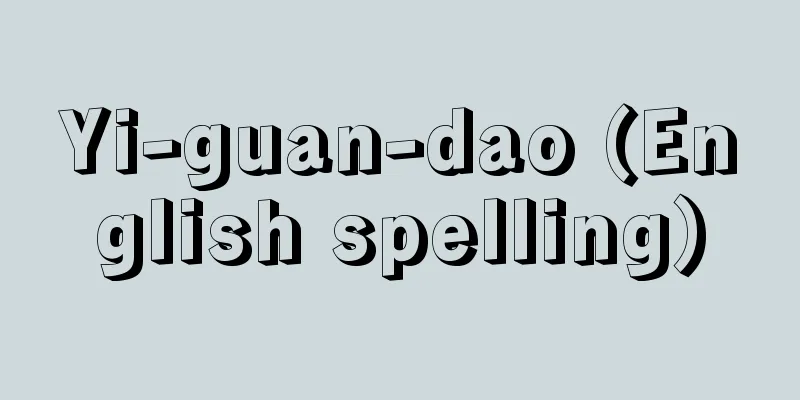Eiji Sawamura

|
Professional baseball player (pitcher: right-handed, left-handed batter). Born on February 1st in Ujiyamada City, Mie Prefecture (now Ise City). He was famous as a fastball pitcher while attending Kyoto Commercial High School (now Kyoto Gakuen High School). In the fall of 1934 (Showa 9), as a fifth-year student at the school, he was selected for the All-Japan team and played against a visiting American Major League Baseball team at Shizuoka Kusanagi Baseball Stadium. He pitched well against top batters such as Babe Ruth and Lou Gehrig, but was defeated 1-0 by Gehrig's home run. However, the story of his good performance is still told to this day. When the official professional baseball season began in 1936, he played as the ace pitcher for the Tokyo Giants (now the Yomiuri Giants), bringing the Giants their first championship. In the spring of 1937 (1937-1938 was a two-season system), he had 24 wins and 4 losses, becoming the first MVP (now the Most Valuable Player). His strengths were his drop pitch (a curveball with a large drop) and his powerful fastball. He served in the military twice, so he only played for the Giants for five years. He died in battle off the coast of Taiwan in December 1944. In 1947, the Sawamura Award was established in his name. At one time, it was only for pitchers from the Central League, but now it is also open to pitchers from the Pacific League, and the award is given every season to the best pitcher unless there is no other eligible pitcher. His uniform number 14 is a retired number for the Giants. [Junji Kanda and Hiroshi Morioka, September 16, 2016] During his five years playing, his total stats were 105 games pitched, 765 and a third innings pitched, 63 wins and 22 losses, an ERA of 1.74, 554 strikeouts, 65 complete games, and 20 shutouts. His main titles include most wins twice, best winning percentage once, highest winning percentage once, most strikeouts twice, and Most Valuable Player (now MVP) once. In 1959 (Showa 34), he was inducted into the Baseball Hall of Fame (Baseball Hall of Fame Museum), which was the first class of inductees. [Editorial Department, Hiroshi Morioka, September 16, 2016] "Sawamura Eiji and His Times" by Ryozaburo Kitahara (1992, Tokyo Shoseki) [Reference] | |Source: Shogakukan Encyclopedia Nipponica About Encyclopedia Nipponica Information | Legend |
|
プロ野球選手(投手:右投左打)。2月1日、三重県宇治山田市(現、伊勢(いせ)市)生まれ。京都商業(現、京都学園高)在学時より速球投手として有名であった。1934年(昭和9)秋、同校5年生で全日本チームに選ばれて、来日したアメリカ大リーグ選抜チームと静岡草薙(くさなぎ)球場で対戦したとき、ベーブ・ルース、ルー・ゲーリッグらの超一流打者に対し好投、ゲーリッグのホームランにより1対0で惜敗したが、そのときの善戦の模様は今日まで語り伝えられている。1936年、プロ野球の公式戦が始まると東京巨人(現、読売ジャイアンツ)のエースとして活躍、巨人に初の優勝をもたらした。1937年春季シーズン(1937~1938年は2シーズン制)24勝4敗で、初の最高殊勲選手(現、最優秀選手)となる。三段落ちといわれたドロップ(落差の大きいカーブ)と豪速球が持ち味であった。兵役に二度就いたため、巨人での実働は5年間。1944年12月台湾沖で戦死。1947年彼の名を冠した「沢村賞」を制定、一時セントラル・リーグの投手のみを対象としていたが、現在はパシフィック・リーグも対象として、該当者のない場合を除き優秀投手に毎シーズン贈ることにしている。その背番号14は巨人の永久欠番である。 [神田順治・森岡 浩 2016年9月16日] 実働5年間の通算成績は、登板試合105、投球回765と3分の1、63勝22敗、防御率1.74、奪三振554、完投65、完封20。獲得したおもなタイトルは、最多勝利2回、最優秀勝率1回、最高勝率1回、最多奪三振2回、最高殊勲選手(現、最優秀選手)1回。1959年(昭和34)第1回目の野球殿堂(野球殿堂博物館)入り。 [編集部・森岡 浩 2016年9月16日] 『北原遼三郎著『沢村栄治とその時代』(1992・東京書籍)』 [参照項目] | |出典 小学館 日本大百科全書(ニッポニカ)日本大百科全書(ニッポニカ)について 情報 | 凡例 |
<<: Gennosuke Sawamura - Gennosuke Sawamura
Recommend
Commonwealth of Nations
At the beginning of the 20th century, the Commonwe...
Santeria - Antonio Sant'Elia
Italian architect. After receiving technical trai...
Language education - Gengokyoiku (English)
Generally speaking, it refers to mother tongue edu...
Jefferson
American politician. Third president (1801-1809). ...
(R)Im Kyŏng-ŏp
1594‐1646 A military official of the Yi Dynasty in...
public service
...However, in the United States, the term is som...
Goshiki [town] - Goshiki
An old town on the west coast of central Awaji Isl...
Mureş (river) (English spelling)
A tributary of the Tisza that flows through Romani...
anchoring effect
… In addition to the adhesive mechanisms describe...
Ulva reticulata (English spelling) Ulvareticulata
…[Mitsuo Chihara]. . . *Some of the terminology e...
Phenocryst - phenocryst
Phenocrysts are relatively large crystals found sc...
Wolves - Urubusu
…(2) During the period of great migrations, it be...
Pavlov (English spelling) Ivan Petrovich Pavlov
Russian physiologist. Born on September 14th to a...
Aralia - Aralia
1. A perennial plant of the Salamandaceae family....
Andradite - Andradite
Please see the "Alfalfa" page. Source: ...









